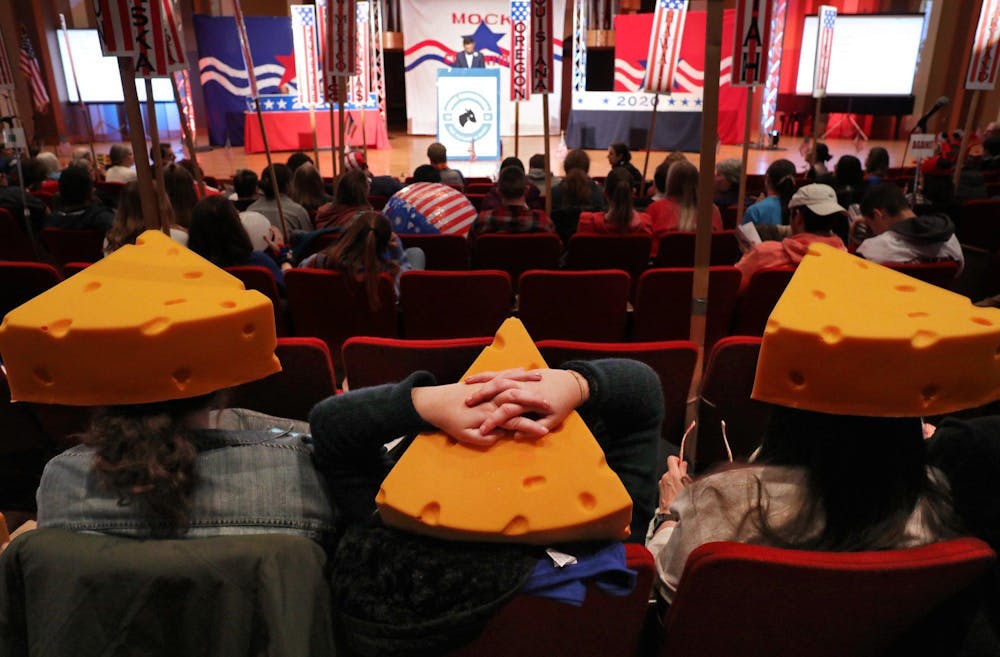It’s been nearly a month since the first votes were cast in the Democratic presidential primaries.
But if you’re a resident of the Hoosier state, you’ll have to wait until May 5 to make your voice heard. This is because our current primary system is a drawn-out process that takes place over several months, with some states voting earlier than others.
This disparity in when states vote disadvantages Hoosiers and devalues their votes.
States that vote earlier in the primary calendar have outsized influence on voters’ decisions in other states, research indicates. A 2010 Brown University study found that Iowa, which votes first, has about 5 times more influence on primary outcomes than states that vote on Super Tuesday — the voting date on which most delegates are available. Super Tuesday will take place this year on March 3.
Indiana votes approximately two months after Super Tuesday, making its influence even lower. This is despite the fact that Indiana is more representative of the American electorate than early voting states.
If all 50 states were ordered by how representative they are of the national Democratic electorate in terms of race, ethnicity and education, Indiana would vote eighth, according to an analysis from FiveThirtyEight last year. New Hampshire and Iowa, the first two states in the primary calendar, would vote 34th and 42nd respectively.
This ordering forces Indiana voters to pick between options determined by voters in other states.
Consider the 2016 Republican primary. Indiana polling in December showed candidates such as Sen. Marco Rubio, R-Fl., and former neurosurgeon Ben Carson polled at over 15% long before any votes were cast. Yet after other states voted — and Hoosiers waited to be heard — both candidates dropped out.
By the time the Indiana primary rolled around, only three candidates were active: Donald Trump, Sen. Ted Cruz, R-Texas, and former Ohio Gov. John Kasich. The diversity in candidates, which was present at the beginning of the primary was suddenly winnowed to fewer choices, all without our input.
This process is undemocratic.
American democracy is built on the idea that one person gets one vote. But the unequal influence of Indiana and earlier voting states represents the disenfranchisement of the Hoosier primary voter.
A better solution is a national primary: one day, every state, every vote with the same influence and every voter with an equal say.
This solution has popular support. A January poll of Democratic voters showed that 58% of Democrats support a single-day national primary. A single day of voting across the country is a closer approximation of what the candidates would face in the general election.
Whether you lean Democrat or Republican, this idea represents a boon to your party. A national primary more closely mimics a general election, and the candidates who emerge victorious would be better suited for election day in November.
Some prominent figures, such as Nate Silver, founder and editor-in-chief of FiveThirtyEight, defend the current primary system. Silver asserts that a benefit of the long primary is the many challenges candidates face.
“The point of a long primary campaign is that you have to survive lots of tests. Debates, opposition research/rough news cycles, polling slumps,” he tweeted last week.
But there is no reason a national primary cannot feature the same challenges. In the 2016 general election, both Trump and Hillary Clinton weathered negative news, polling changes and debates. A national primary could easily incorporate the same factors by simply having a similar multi-month runup.
Another critique of a national primary is it fails to build a majority. In a crowded field, such as this year's, it may be the case that a candidate “wins” the primary by earning a small plurality, and winning with 15% of the vote is far from ideal.
But voting systems such as ranked-choice voting, in which voters rank candidates by preference, could solve this problem. If no one wins a majority, votes are recounted with the lowest candidates eliminated until someone reaches a majority. By design, this process builds a majority and disposes of this critique.
It’s clear that the current primary system isn’t working for the Hoosier state. Our votes deserve the same influence in choosing candidates, and a national primary would be better than what we have now.
It’s time for Indiana to be heard in the primary process.
Christian Sayers (he/him) is a senior studying mathematics and economics. He hopes to someday own a large rabbit.






